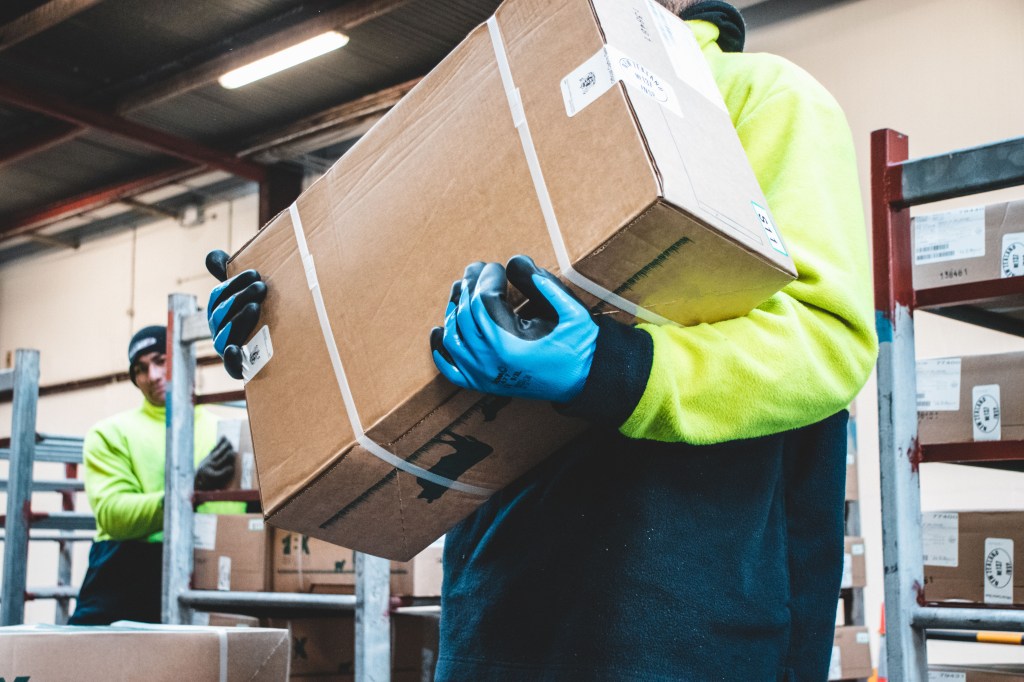Choosing the best winter hand protection can be tricky, but we’re here to help!
Why do you need good quality winter work gloves?
Without them, you’re at risk of…
Hypothermia:
- Normal body temperature drops to 95°F or less.
- Mild symptoms: Alert but shivering.
- Moderate to severe: Shivering stops but confusion, slurred speech, heart rate decrease, loss of consciousness, death.
Frostbite:
- Body tissue freeze, eg. hands and feet. Can occur at temperatures above freezing.
- Symptoms: Numbness, reddend skin, which develops discoloration patches, may feel hard and blister.
Trenchfoot:
- Non-freezing injury to the foot, caused by lengthy exposure to wet and cold environment.
- Symptoms: Redness, swelling, numbness and blisters.

Dexterity Versus Warmth
For optimal warmth, winter hand protection should have three layers:
- The Outer Layer: This layer should be a material with high abrasion resistance, water and wind repellence, cut resistance, etc. based on the tasks you are performing and the protection that you need.
- The Middle Layer: This is the insulating layer, which should be made of a material that can trap a lot of air to provide warmth.
- The Inner Layer: This layer will be closest to the skin and has moisture-wicking properties to remove sweat from the skin.
Unfortunately, there is no perfect glove that will allow you to stay warm in -50°F and easily be able to pick up nuts and bolts. There will have to be a trade off.
- Thicker, more layers = less dexterity
- More dexterity = less insulation
The individual needs to decide what is more important to complete the job in a timely and safe manner.
Our three must-haves for winter work gloves:
1. Insulating lining, preferably one that is also moisture wicking
Some choices for lining materials include:
- Polypropylene – excellent at wicking away moisture, perspiration and other fluids. Unfortunately it is not overly warm as a liner.
- Thinsulate™ – keeps you warm even when wet. The downside is that its not removable, so once its wet, it will be for the whole day until you can remove the gloves and dry leave them to dry.
- Thermolite® – moisture-wicking liner that dries 20x faster than comparable insulating fibres. Thermolite® also helps trap heat and provides insulation up to 5°C. For work in temperatures below that you may need to consider Thinsulate™
2. Water Resistance
When working in rain, sleet or snow, it might be difficult to locate totally waterproof gloves, but choosing the correct water-repellent can help!
- Enprotex® or Porelle® are recommended for working in damp or icy conditions
However, if the lining is waterproof, sweat can also accumulate within the glove.
The best option is to alternate between a water-repellent lining and a moisture-wicking lining throughout the day as needed.
3. Extensive Movement
The cost of super warm, waterproof work gloves is the unfortunate loss in precision.
In some situations such as shoveling snow or working at a ski resort, a lack of dexterity is manageable.
However, if you’re working in a cold environment where precise hand movements is required you might need to find a glove that offers the best dexterity for the temperatures you are working in.
Wearing the correct gloves when working in cold conditions can prevent some pretty serious conditions, and its best not to skimp on price here – if you work with your hands, you don’t want to lose them or risk serious injury.
What matters most is that you have the correct combination of features for the environment in which you operate and the responsibilities of your job. Consider the advantages and disadvantages, what is a must-have vs a nice-to-have, and what you cannot live without. That is when you will discover the ideal pair of cold weather work gloves that will keep you toasty until spring
Check our range of thermal and water-resistant gloves – We offer winter gloves rated for temperatures ranging from 10°C to -50°C (50°F to -58°F).


